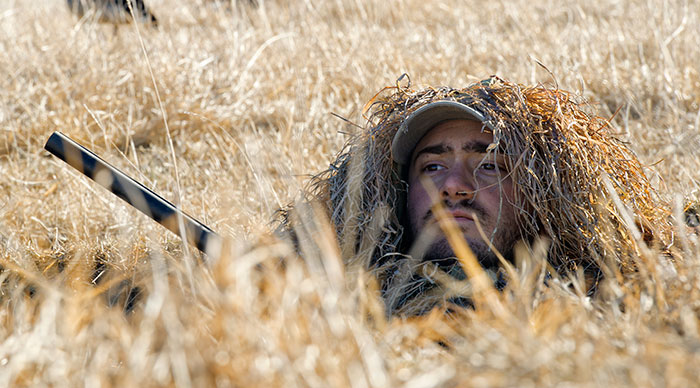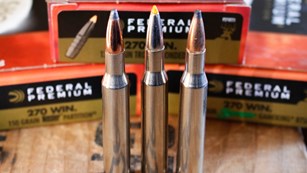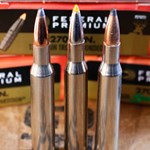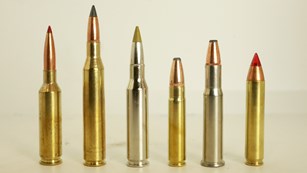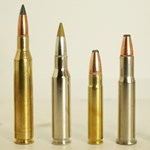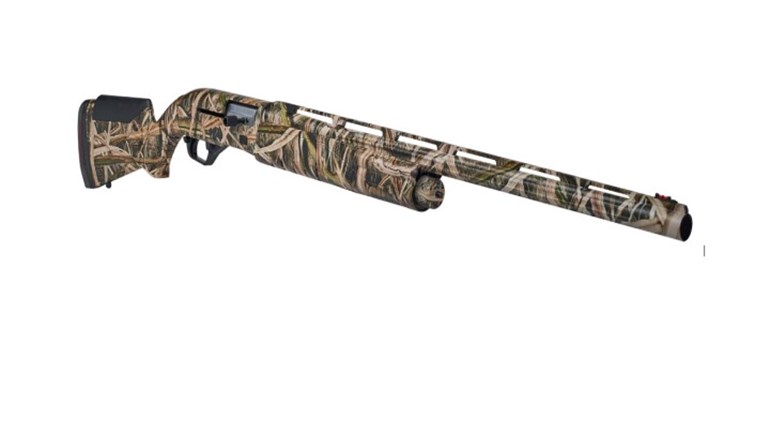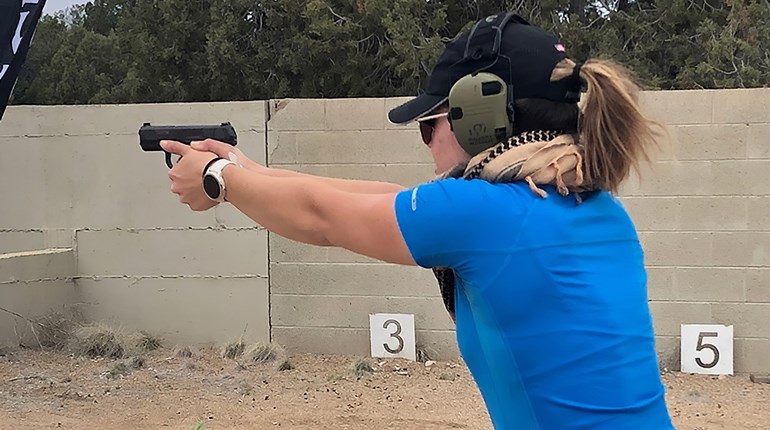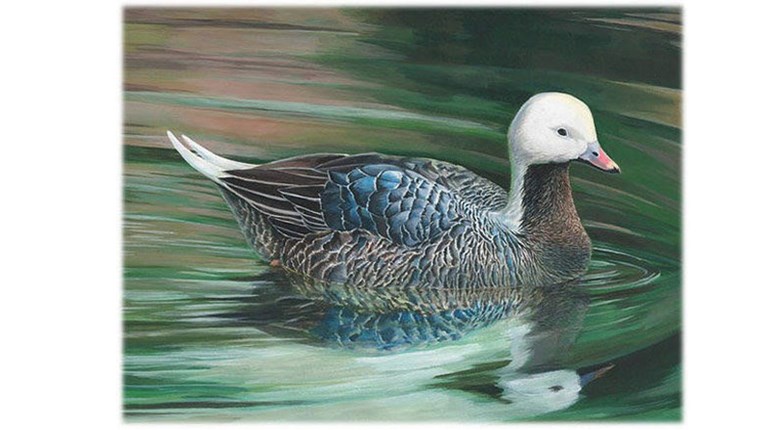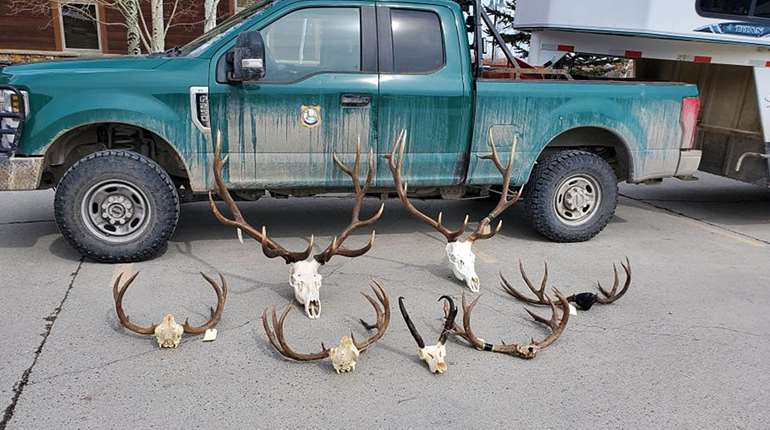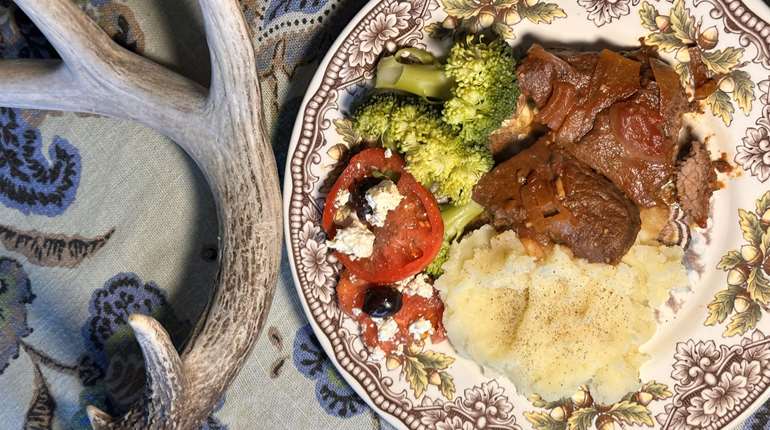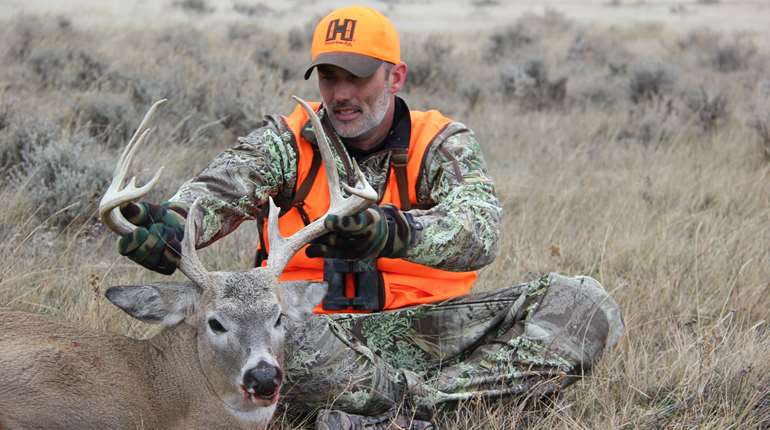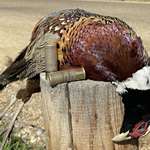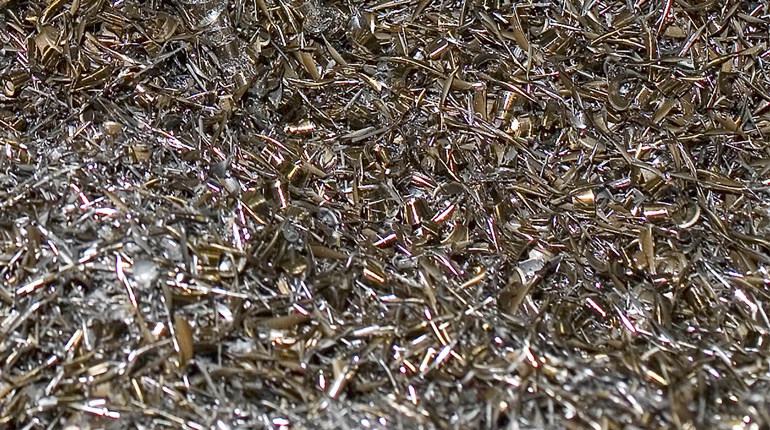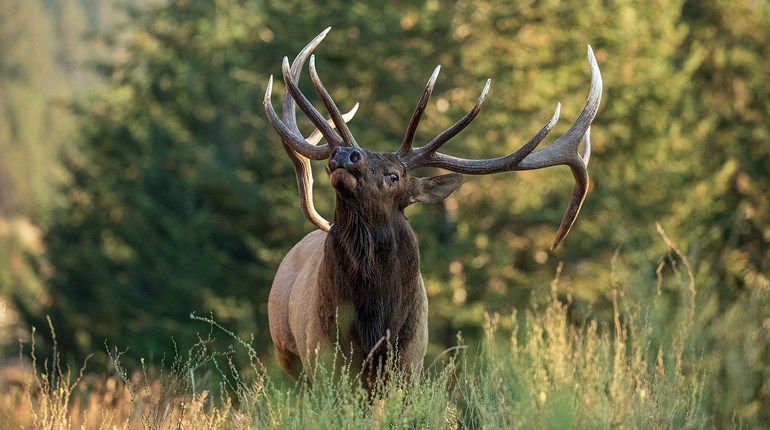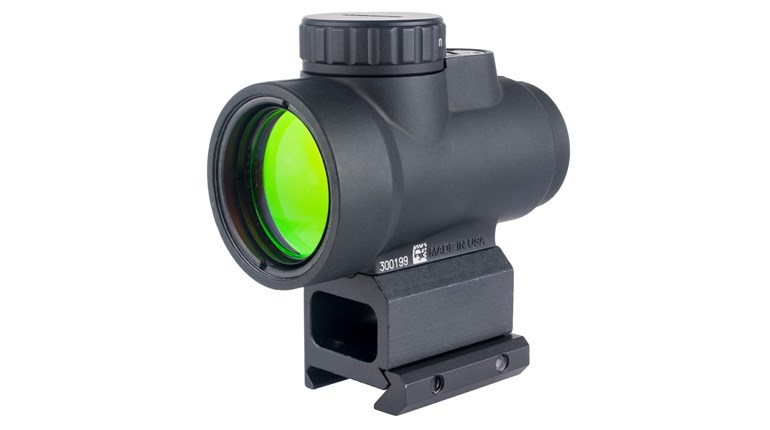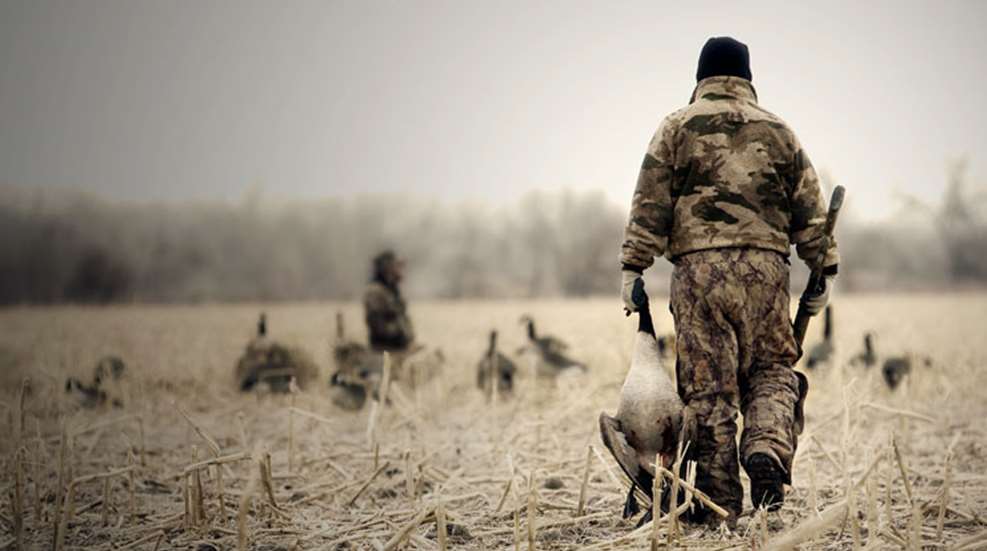
My two most epic goose hunts happened on the last day of the season, one when warming temperatures melted enough snow to bring back the geese that were driven south two weeks prior. It was a classic migration day with a strong wind that required lots of loud calling and plenty of flagging. On the second hunt it was 16 below zero and dead still. Because we were set up in a pasture the geese were using the previous afternoon, our 14 full-bodies were all we needed to shoot our limits and then land literally hundreds more for photography. No calling or flagging.
These hunts couldn’t have been more different, yet what they had in common was lots of birds finishing in the decoys at a time when most hunters are lucky to scratch down limits of geese warily circling or sliding off a spread. Fact is, toward the end of hunting season, when waterfowl have seen every trick in the book and have been shot at every time they fly close to decoys, they’re not going to be easy pickings unless conditions are perfect. That’s when tending to the smallest details, changing up your tactics and militantly adhering to certain fundamentals can pay off big.
Make Hiding Your No. 1 Priority
Most hunters know concealment is important, but few apply that fact to the extent necessary for consistent, late-season success. We tend to spend way more time on our decoys despite that if geese can see us, a perfect spread is irrelevant.
When geese land where you can’t get a shot, your decoys may need some adjusting. But if birds flare, veer off after they’re cupped up and seemingly committed, or swing wide and continue flying, it’s not your decoys that need work. It’s your blinds. Spend more time making sure your blinds do not appear as the rectangular-shaped lumps that educated geese have learned to avoid and are the exact same color and tone as the ground cover. In snow, cover blinds with white that actually matches the snow. (Make sure the cover doesn’t reflect blue in overcast conditions.) Also make sure faces are covered and guns and sunglasses aren’t reflecting sunlight. When that’s not enough, try the following:
■ On strong-wind days when geese are flying low, four to six decoys clustered tight to the downwind end of each blind will normally hide you when you’re lying inside the spread. On calmer days, not so much. My buddy Brian Hauptman fools wary Nebraska honkers by placing some of his decoys on 3/8-inch steel rods 48 to 24 inches long, which he drills into the ground tight to the blinds—taller stakes around the hunters’ heads and shoulders, and lower ones toward the feet so he can watch approaching geese over the backs of the decoys. These elevated decoys hide what would be suspicious bumps in an otherwise flat field. On sunny days they also break up the unnaturally geometric shadows cast by layout blinds.
■ If you can’t hide in the decoys where the birds’ attention will be focused, place blinds where you can find adequate cover, then set the decoys. In other words, let good cover determine decoy placement, even if that means not being exactly on the “X” or lying in the spread. Look for low spots, from natural depressions to tractor ruts, where you can lower your profile and lie flatter to the ground. The lower you are, the less shadow you’ll cast and the more you’ll blend in.
■ Consider leaving your high-profile ground blinds at home and lying on a low backrest with a foam bedroll. Then cover up with a ghillie blanket and stubble, or wear a ghillie suit. Avery Outdoors makes a suit in different colors that works well in grass, stubble and fence rows. In snow, a white sheet might suffice, but fitted mattress covers conform to your body better and have more texture, making awesome snow blinds. Shoveling out man-sized holes in snow drifts along fences can also help.
■ Grassy fence lines and irrigation ditches are plentiful where there’s agriculture so don’t overlook them as hiding spots. Choose one running parallel to the wind. Geese typically don’t like to land facing a barrier, or at least close to it. But if wind direction gives you no choice, set the decoys as far from the fence as it takes to decoy the geese, but still be inside gun range.
On that below-zero hunt I mentioned earlier, trial and error determined the closest distance the decoys could be placed to the fence we hid behind and still have geese land in them. We knew the decoys were too close when geese stopped short of the spread and landed 30 yards away on the other side. Moving the spread out 10 yards farther still kept it in gun range, and made the geese feel confident enough to close the gap. The fact we didn’t cluster our decoys tightly together like many other hunters in the area also helped to sell our spread.
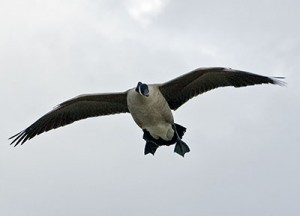 Be a Contrarian
Be a Contrarian
The next step to late-season success is overhauling your decoy spread. Offer educated geese a new look from what other hunters have been using for days and from what you may have been relying on until now. Hunters typically put out every decoy they own. One friend noted that in the place where he grew up, everyone hunted over the same exact spread: four-dozen Big Foots. Geese aren’t stupid, and eventually the same look loses its appeal. Find out what the majority of hunters in your area are using, then be different.
■ As long as you’re under a flight path or on the “X,” try using only 12 to 18 decoys if everyone else is setting out four to six dozen or more. If you’re worried that few may not be enough drawing power, my friend Andy Farrell has killed lots of honkers over just two Dave Smithdecoys in January, when geese are naturally pairing up.
■ If most hunters are setting up in the middle of corn or stubble fields, hunt the edges or ends of fields, where harvesting equipment often leaves plenty of standing or spilled grain. Do the opposite if most hunters are set up along fence lines.
■ Don’t ignore grass pastures. Geese love to loaf in them and feed on the short green shoots that pop up beneath the dead grass—even in late season. Contrary to what most hunters believe, geese don’t just key in on grain in cold weather. So while other hunters battle it out in the grain fields, you’ll have pastures where geese are not used to being hunted all to yourselves.
■ Invest in different kinds of decoys to mix up your spread. Most hunters use the same full-bodies throughout the season. Having silhouettes and wind socks, or different brands of full-bodies, lets you present something they may not have seen. Try using realistic shell decoys—sleepers, resters and feeders. (Avery Outdoors makes excellent shells.) In cold weather geese spend lots of time on their bellies conserving heat.
■ Speaking of bellies, to add realism to your spread in severe cold, place the majority of your full-bodies directly on the ground—not on stakes. If you’ve ever watched singles land in your decoys on a really cold morning, more often than not they’ll immediately lie down. Conversely, when geese are feeding heavily, like on that great migratory day I mentioned, the majority of your spread should be feeders. The advantage of owning lots of decoys is that, on any given day, you can select more of a certain pose to help communicate to passing geese what your “flock” is doing. For instance, you wouldn’t want to use a bunch of feeders on an ice shelf along a river where geese would be resting.
■ Most hunters tend to set up their decoys in a U-shaped pattern to help funnel geese into a defined landing zone. Geese get wise to this so spread yours out for a more natural look, such as in scattered family groups with plenty of room between decoys. Geese often land among others provided there’s enough room. Calling or subtle flagging can usually bring them in where you want.
Don’t Over-Call, then Again …
Fred Zink of Avian-X decoys says that silent geese are smart geese. And during the late season, you can see a lot of them. When calling, mimic approaching flocks. If they’re quiet, don’t call unless they fly by and show no signs of circling around. Silent honkers that aren’t coming your way may take a few “signs of life” calls (sparse clucks or moans) or flagging to get their attention, but as soon as they turn, go quiet unless they start talking or veering off course.
In general, the windier it is, the more calling you can get away with and might need. A late-season migratory day will require as much calling as in the early season. You might need to call aggressively to high incomers to get them to drop altitude quickly. At no point in the hunting season do you want high flocks flying directly over your decoys since that’s their best chance of spotting you and anything else they may not like. But in late season it’s the kiss of death.
Go for the First Pass
Getting educated geese to commit on the initial approach is a huge advantage. With that in mind, try these two tactics.
■ Since birds land into the wind, calling to flocks upwind or crosswind from your spread can be self-defeating. You want them to see your decoys and head your way, but if they come straight over they might be too high to shoot and will likely see you.
A better strategy is to turn them in your direction with calling or flagging, then go silent and let them drift downwind before calling again. The higher they are and the stronger the wind, the farther downwind they’ll need to be to pull a U-turn and drop down enough to land where you want. If a flock turns to your calls and still comes in too high, you’ll need to let the next flock drift farther downwind. Letting them slide at least 100 yards past you is a good start.
■ Where I hunt, late-season geese heading from roost to feeding areas often fly high to avoid pass-shooters, creating a challenge for decoying. How do you get them down before they reach your spread and spot your blinds? Casey Self, an Avery Outdoors pro-staffer, has a cool trick. He places five or six decoys in two groups 50 to 60 yards downwind of the blinds, or in the direction from which the geese are coming. Incomers will often focus on those decoys and begin losing altitude.
Once the geese get low enough, Self starts calling aggressively to pull them into his main spread. This tactic isn’t without risk since the geese might land among those downwind decoys and out of gun range. But like letting birds fly well downwind of your decoys before calling them back, you’ve got to try something different or you’ll have no shooting opportunities at birds that by now have learned just about every trick in the book.
